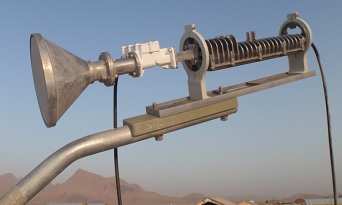Satellite Internet Forum.
Welcome, Guest. Forum rules.To search this site click here > SATSIG search
| Home Login Register |
| Satellite Internet forum › HughesNet and Hughes HX VSATs › HX50 installation Eutelsat W7 Afghanistan |
|
Pages: 1
|
HX50 installation Eutelsat W7 Afghanistan(Read 11865 times) |
|
deathnova
Member
★★ Offline Posts: 11 |
Aug 11th, 2010 at 5:55pm
|
| Back to top |
« Last Edit: Aug 13th, 2010 at 8:54pm by Admin1 »
IP Logged
|
|
Eric Johnston
Senior Member
★★★ Offline Posts: 2109 |
Reply #1 - Aug 11th, 2010 at 8:39pm
|
| Back to top |
« Last Edit: Aug 13th, 2010 at 8:53pm by Admin1 »
IP Logged
|
|
deathnova
Member
★★ Offline Posts: 11 |
Reply #2 - Aug 12th, 2010 at 2:44am
|
| Back to top |
« Last Edit: Aug 13th, 2010 at 8:53pm by Admin1 »
IP Logged
|
|
deathnova
Member
★★ Offline Posts: 11 |
Reply #3 - Aug 12th, 2010 at 2:55am
|
| Back to top |
« Last Edit: Aug 13th, 2010 at 8:53pm by Admin1 »
IP Logged
|
|
deathnova
Member
★★ Offline Posts: 11 |
Reply #4 - Aug 12th, 2010 at 4:00pm
|
| Back to top |
« Last Edit: Aug 13th, 2010 at 8:52pm by Admin1 »
IP Logged
|
|
Eric Johnston
Senior Member
★★★ Offline Posts: 2109 |
Reply #5 - Aug 12th, 2010 at 4:10pm
|
| Back to top |
« Last Edit: Aug 13th, 2010 at 8:52pm by Admin1 »
IP Logged
|
|
deathnova
Member
★★ Offline Posts: 11 |
Reply #6 - Aug 12th, 2010 at 4:17pm
|
| Back to top |
« Last Edit: Aug 13th, 2010 at 8:52pm by Admin1 »
IP Logged
|
|
Eric Johnston
Senior Member
★★★ Offline Posts: 2109 |
Reply #7 - Aug 12th, 2010 at 7:31pm
|
| Back to top |
« Last Edit: Aug 13th, 2010 at 8:52pm by Admin1 »
IP Logged
|
|
deathnova
Member
★★ Offline Posts: 11 |
Reply #8 - Aug 13th, 2010 at 2:18am
|
| Back to top |
« Last Edit: Aug 13th, 2010 at 8:51pm by Admin1 »
IP Logged
|
|
deathnova
Member
★★ Offline Posts: 11 |
Reply #9 - Aug 13th, 2010 at 3:29pm
|
| Back to top |
« Last Edit: Aug 13th, 2010 at 8:51pm by Admin1 »
IP Logged
|
|
A.Walker
Senior Member
★★★ Offline Posts: 316 |
Reply #10 - Aug 13th, 2010 at 5:04pm
|
| Back to top |
« Last Edit: Aug 13th, 2010 at 8:51pm by Admin1 »
IP Logged
|
|
wigglyamps
Member
★★ Offline Posts: 4 Afghanistan |
Reply #11 - Aug 14th, 2010 at 5:13pm
|
| Back to top |
IP Logged
|
|
H311rasor
Member
★★ Offline Posts: 2 |
Reply #12 - Sep 29th, 2010 at 5:30pm
|
| Back to top |
IP Logged
|
|
Eric Johnston
Senior Member
★★★ Offline Posts: 2109 |
Reply #13 - Sep 29th, 2010 at 6:37pm
|
| Back to top |
« Last Edit: Sep 30th, 2010 at 9:15am by Admin1 »
IP Logged
|
|
H311rasor
Member
★★ Offline Posts: 2 |
Reply #14 - Sep 30th, 2010 at 5:27am
|
| Back to top |
IP Logged
|
|
Pages: 1
|
Email me: eric@satsig.net
Powered by YaBB 2.5.2!
YaBB Forum Software © 2000-. All Rights Reserved.
Disclaimer, Terms of Use and Privacy Forum User Agreement Forum rules Cookie policy.





